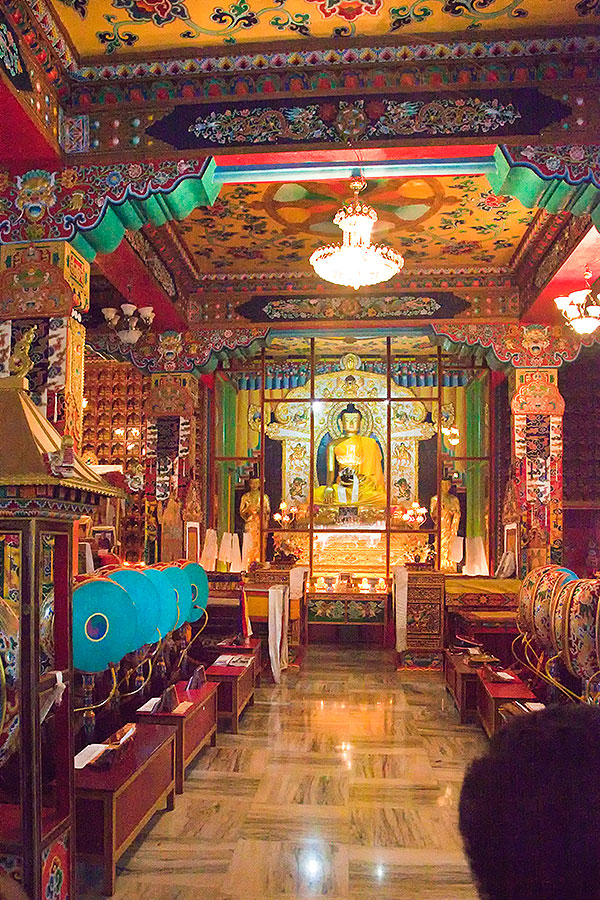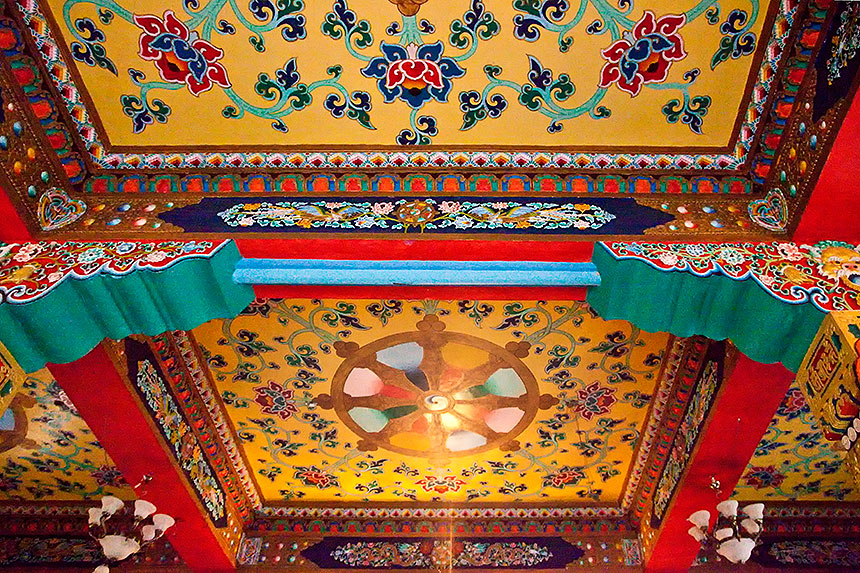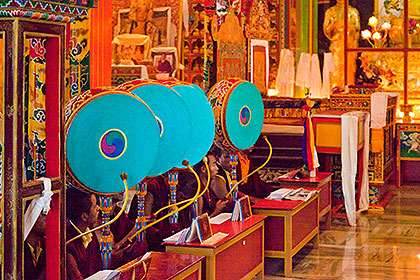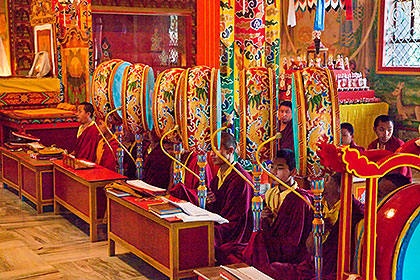Bodh Gaya: State of Bihar; Buddhist Temples and the Bodhi Tree
After leaving the ghats at Varanasi, we are spending most of today motoring across the Indian state of Bihar to Bodh Gaya. We have box lunches with us, and make only a few brief rest stops. Even so we don't reach Bodh Gaya until after 3PM, leaving us only a couple hours there before it becomes dark.
Though the ride is long, it is always interesting to observe the patterns of daily life through the bus windows, and as usual I snap a few photos from the bus.
The main observation I must make is that the state of Bihar seems to be more impoverished than anywhere else we have been so far. Along the roads there are countless peasants with makeshift shelters of cardboard, plastic or sheet metal scraps, often encamped on top of piles of trash and animal dung, with fetid open sewer trenches alongside. It appears that these people are just trying to survive while making their way toward the larger cities where they hope to find some kind of opportunity. I did not photograph these migrants, mostly because the bus was moving too fast along the roads where they were concentrated.
Other than impoverished migrants along the roads, we see the small family farms that make up most of India's agriculture. Though very humble, they show the face of subsistence farming, and we can observe the routines of family life, often unfolding as much outdoors as in.
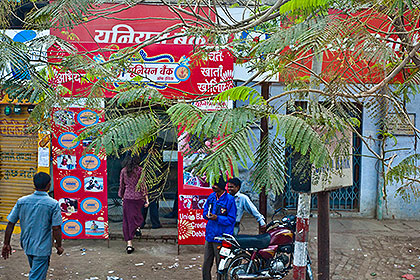
As we leave Varanasi, Sinead goes into a store to purchase something.
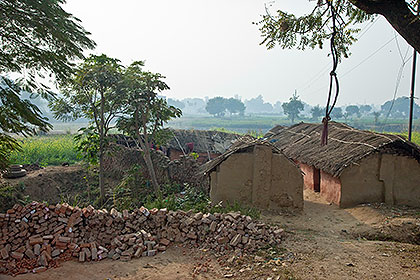
Mud brick and thatch are predominant building materials in the country.

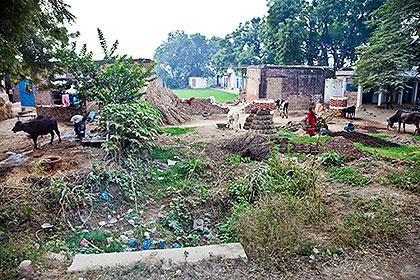
In and around all population centers trash is strewn everywhere, and local people do not seem to even notice it.
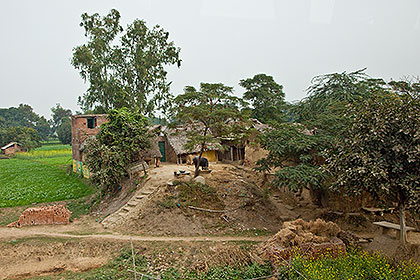
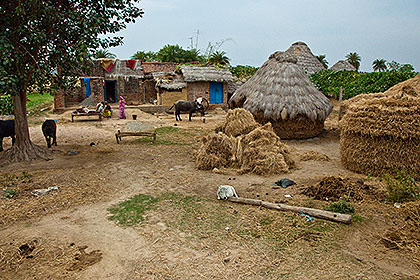
Further out in the countryside there is less trash and apparently a bit less poverty.
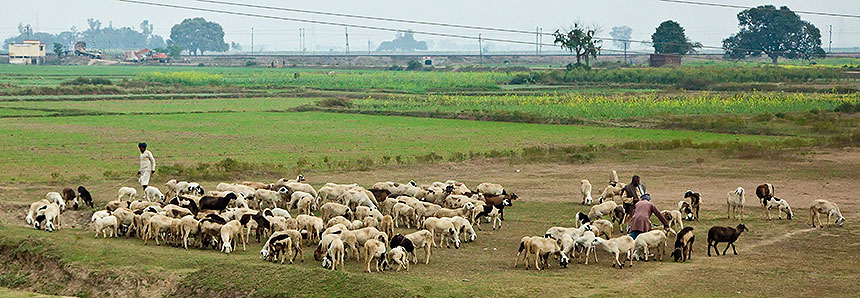
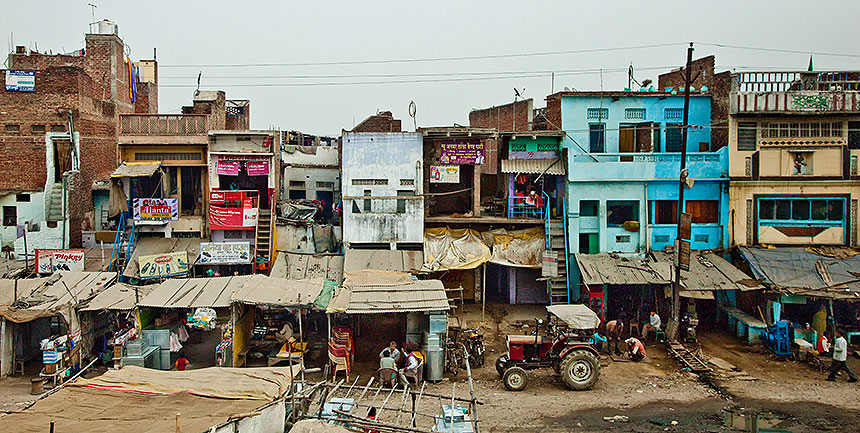
A street scene in a town along the way.
Bodh Gaya
Bodh Gaya is a small city in the state of Bihar, made famous because it is the site where Prince Gautama Siddhartha meditated under a bodhi tree (Ficus religiosa) before gaining nirvana (enlightenment) and becoming the Buddha, circa 500 BC. A descendant of that bodhi tree still grows here, surrounded by a walled compound which also includes a large Mahabodhi Temple. The original temple here was smaller and simpler, built by the Mauryan king Ashoka in the 3rd century BC. At that time, and until the 18th century, this area was known as the Bodhimanda (ground around the Bodhi Tree). A major reconstruction of the temple in the 7th century resulted in the architectural form seen today. Partial destruction by Muslims (12th century); rebuilding and enlargement by Burmese kings (14th century); abandonment as Buddhism faded; then rediscovery (19th century) and rebuilding (19th-20th centuries) has brought the Mahabodhi Temple to the condition it is now seen in.
Today the Mahabodhi Temple complex is a UNESCO World Heritage monument, and its importance to Buddhism has resulted in at least 11 other countries building temples nearby. We start by visiting some of these, before moving on to the Mahabodhi Temple site itself.
Bhutanese Temple
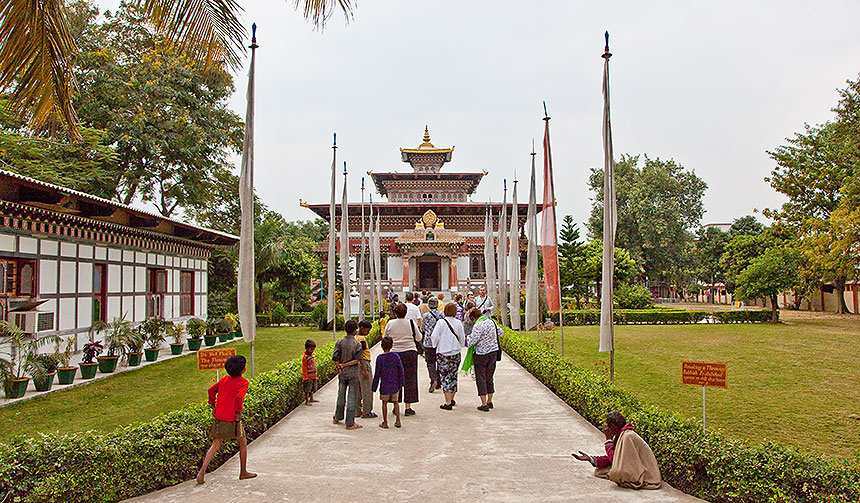
The Bhutanese Buddhist Temple is finely detailed and very colorful, inside and out.
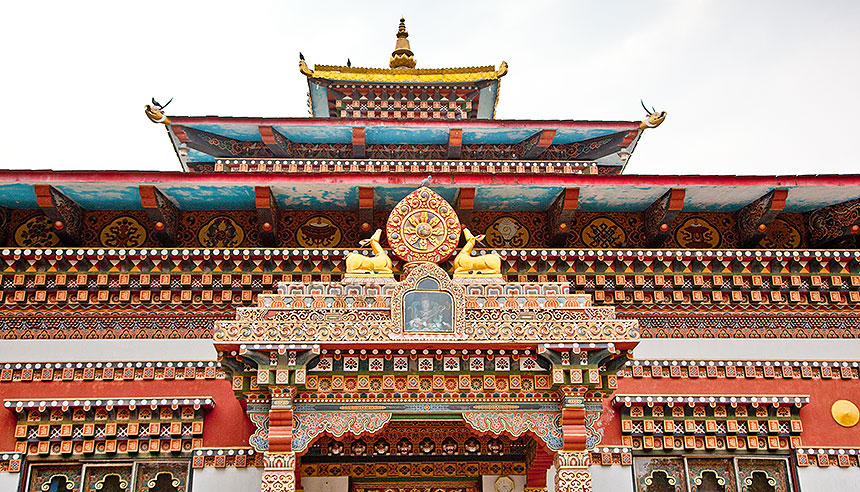
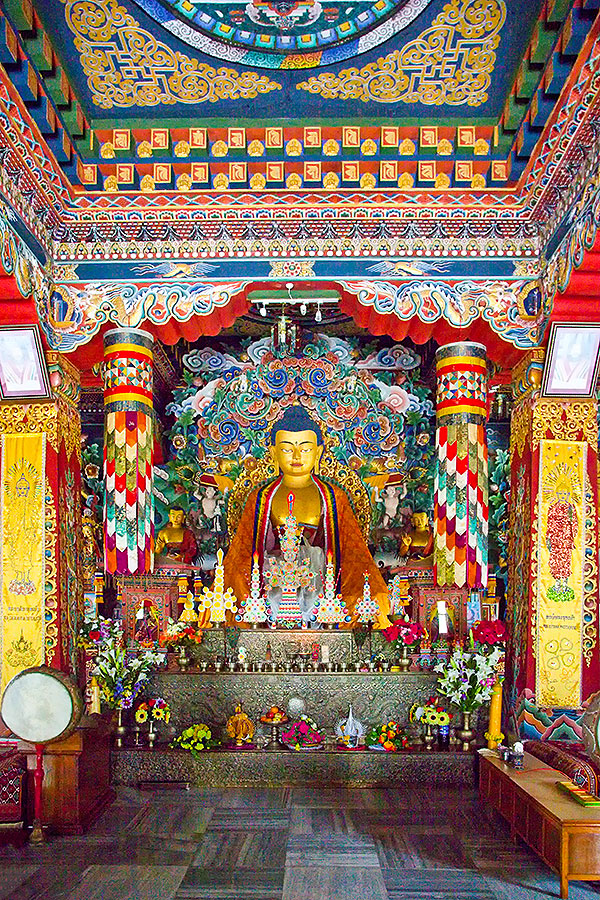
Seated Buddha, above; below are details of the Buddha and of the ceiling over him.
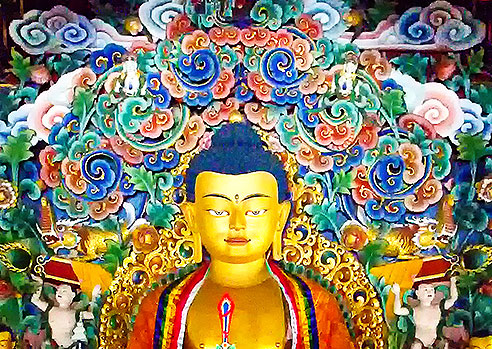
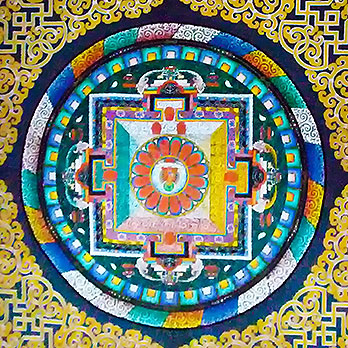
Japanese Temple
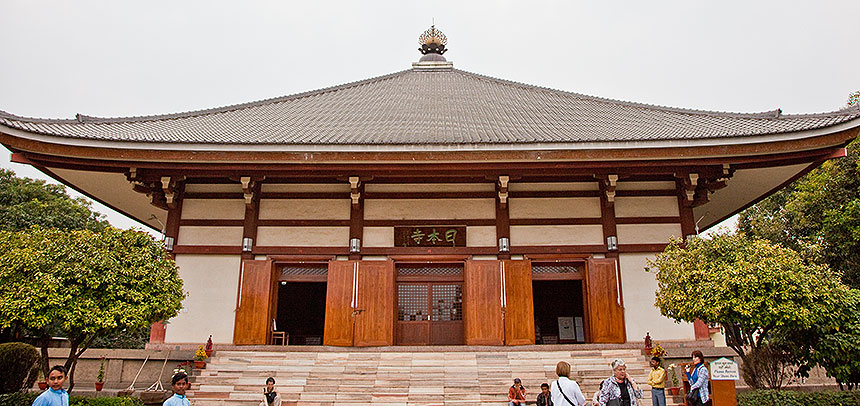
This Japanese Buddhist Temple is quite different, emphasizing graceful form and polished wood.
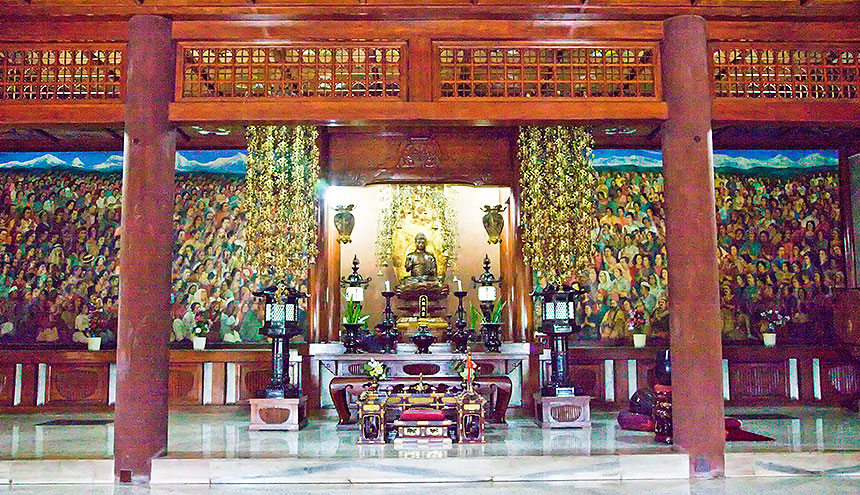
Inside, it also emphasizes polished surfaces. A pair of huge murals of followers of the Buddha flank the altar. Below: details of altar and ceiling.
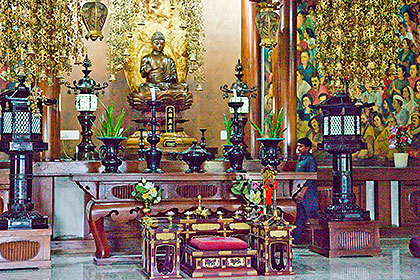
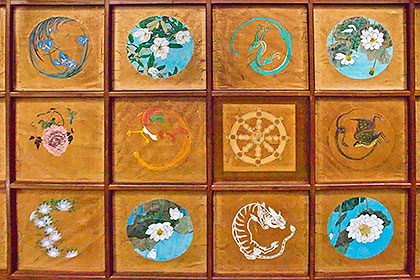
Giant Buddha Statue

This 82 ft. high statue of the Buddha was built by the Daijokyo Buddhist Sect (Japanese) about a century ago. The sect has its own temple, below.
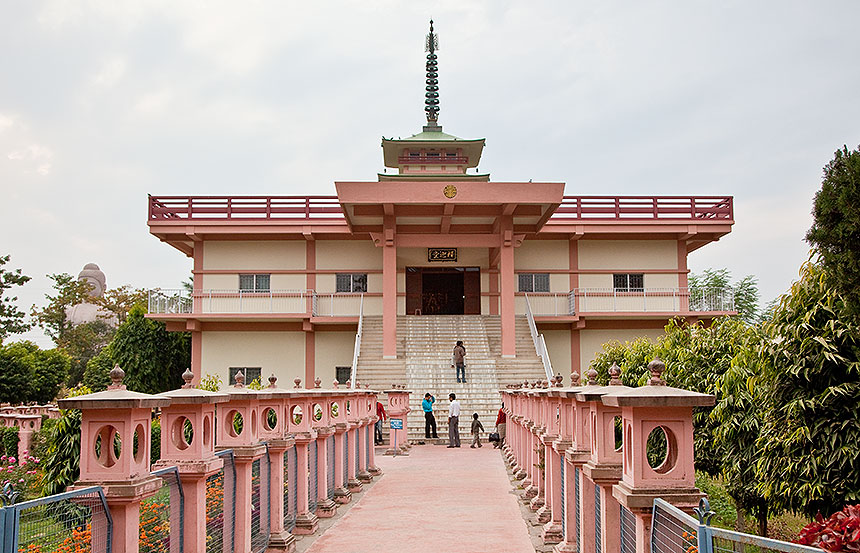
Tibetan Monastery
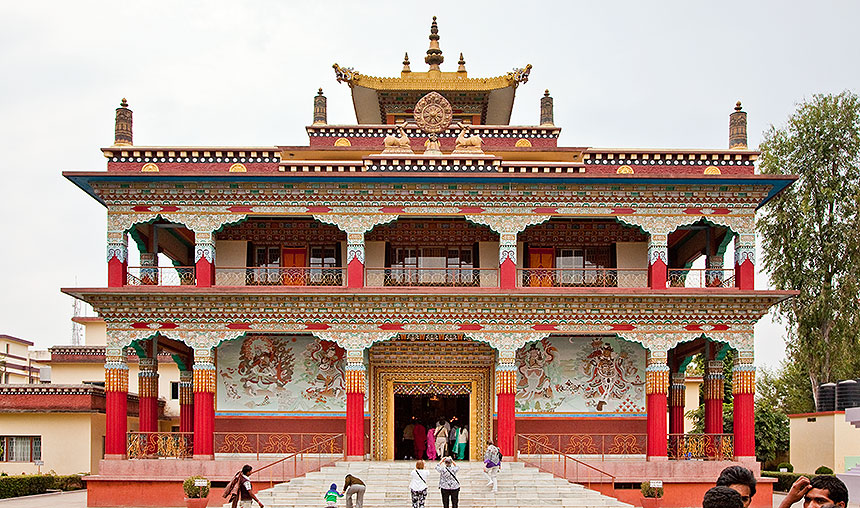
Back to a more colorful style again, here we see the Tibetan Monastery Temple.
Monks are chanting, blowing on horns and beating drums at a service inside.
Monks performing, left and right. NOTE: to see and hear a 19 second video clip, click here or on any of the four interior images above.
Thai Monastery Temple
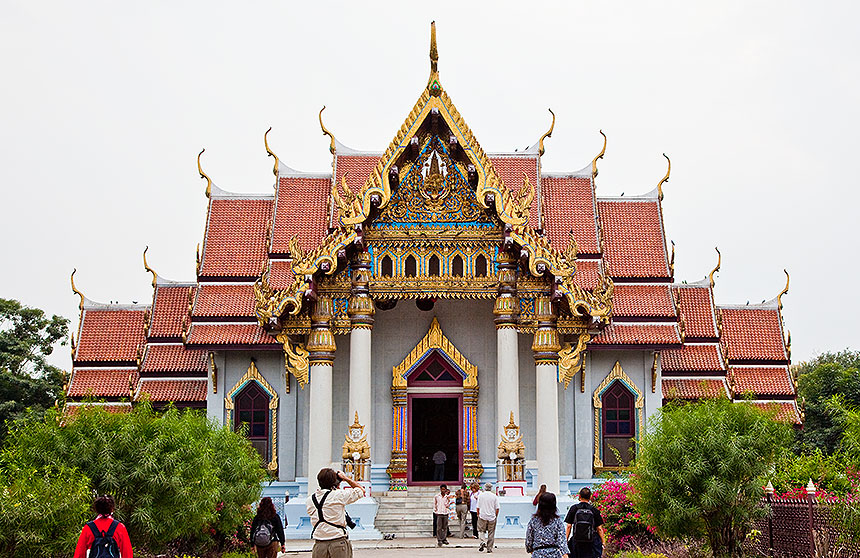
The Thai Monastery Temple is built in the traditional wat style.
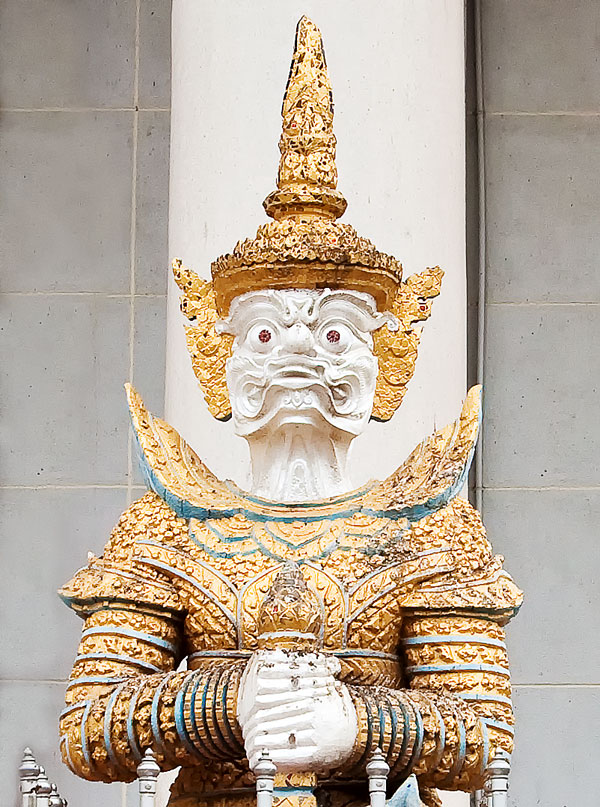
Statues of Thotsakan (Ravana) are on each side of the entrance.
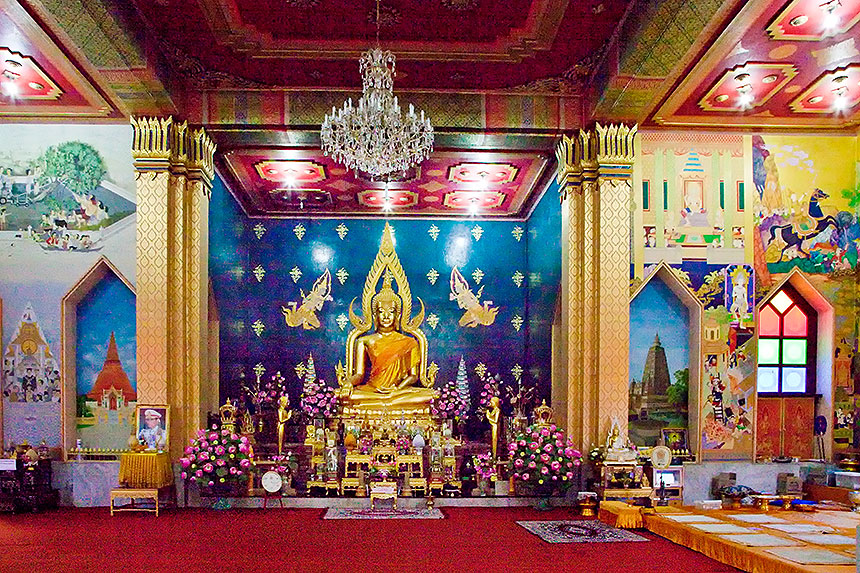
The temple interior, with two details below.
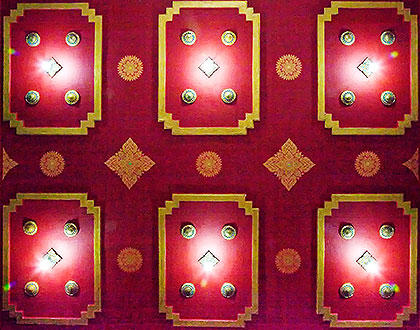
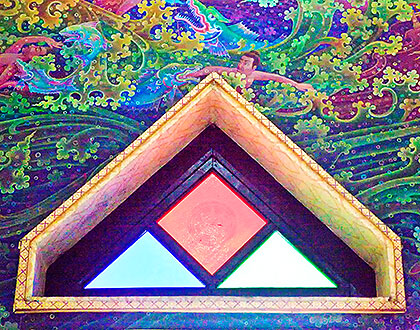
Mahabodhi Temple Complex
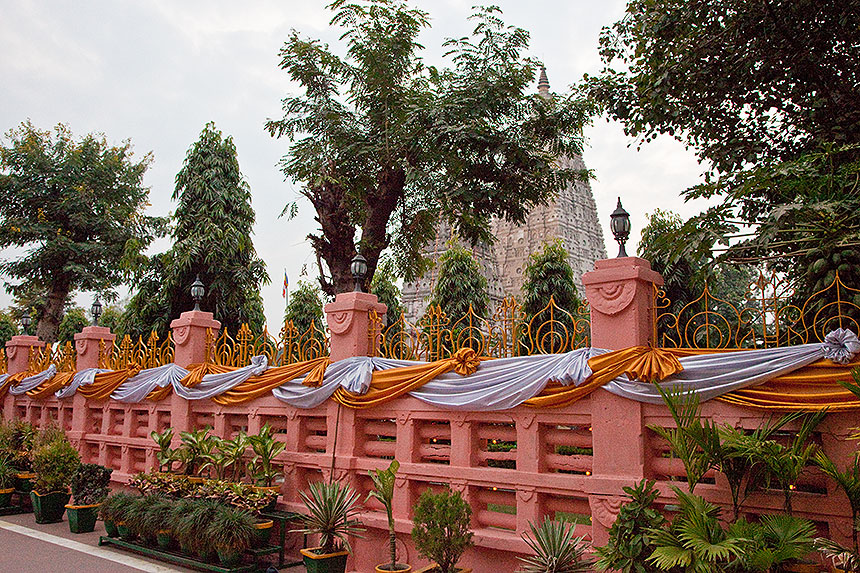
We approach the Mahabodhi Temple Complex at a little after 5PM (dusk). Dusk is said to be the best time to visit, because thousands of oil lamps illuminate the temple, and certainly dusk is a fine time for photography. However dusk is brief, and it gets dark rather quickly while we are here.
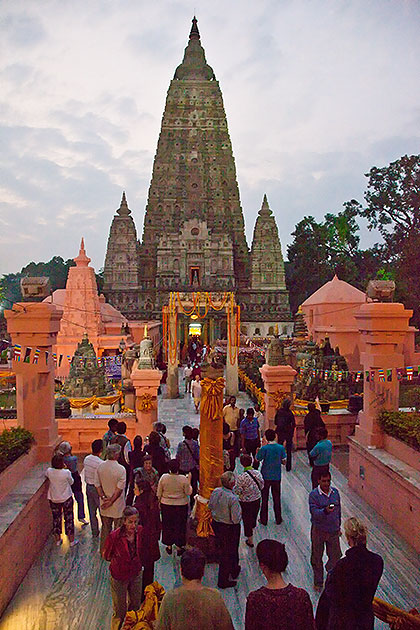
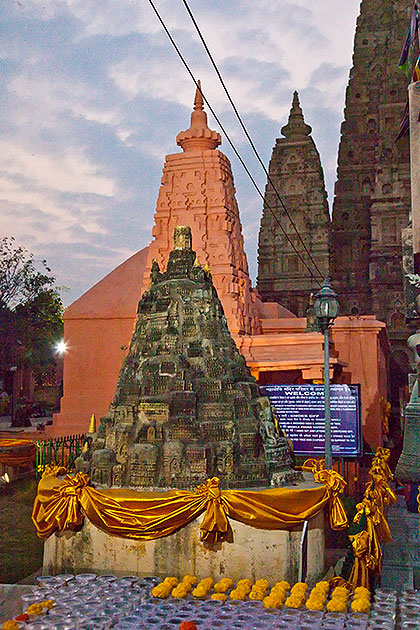
Approaching the temple (left), we see it flanked by two of the four miniature replicas of it that mark each corner. These were added when the Burmese kings rebuilt the temple in the 14th century. The Torana, a granite gateway covered with inscriptions from the Buddha's teachings, dates from the 8th century, and may be seen decorated with garlands at center, left.
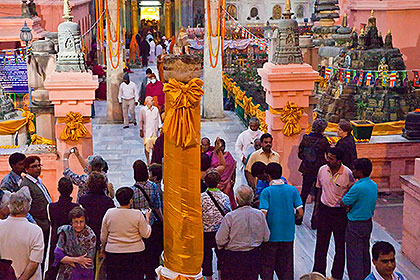
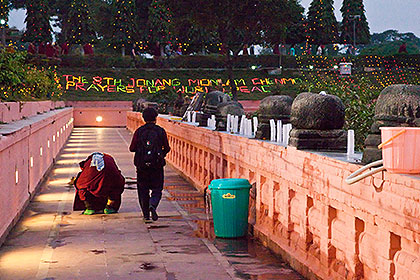
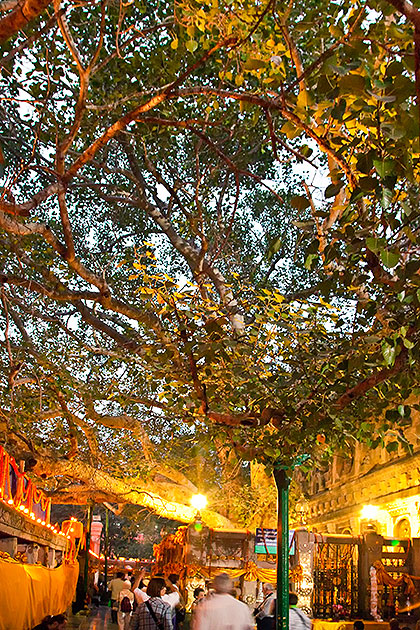
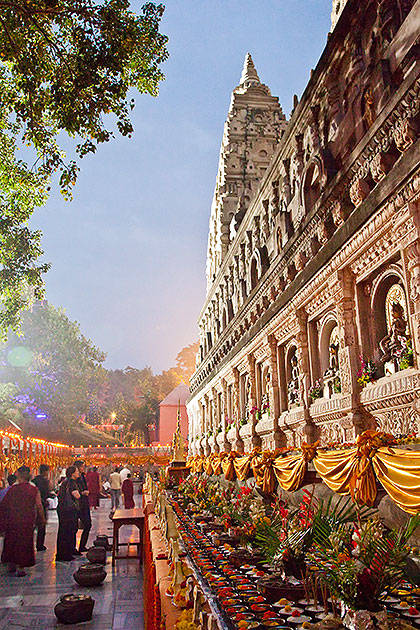
At left, the Bodhi Tree, a descendant of the one the Buddha is said to have spent 49 days under.
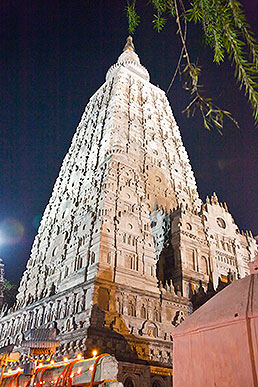
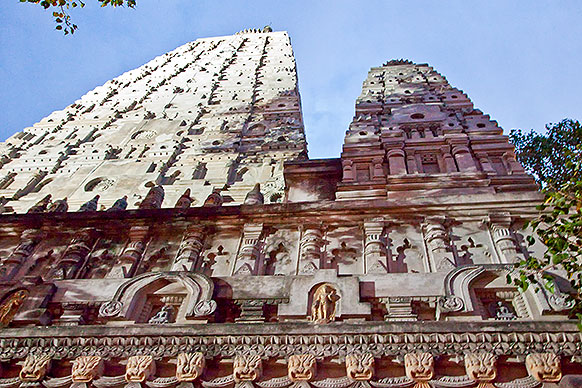
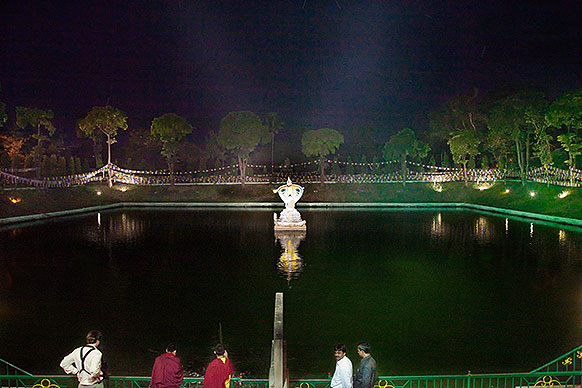
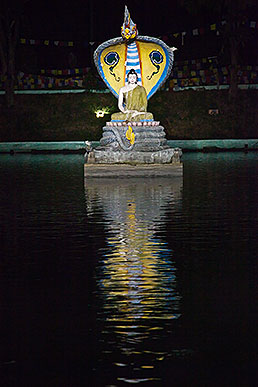
At 5:44PM it is pretty dark already. In the center of the Mucalinda (lotus pond), above left, we see what appears to be a forlorn alien creature looking skyward after being left behind. On closer inspection (right), we can see that it is a statue of the Buddha in front of the head of a cobra. A cobra is said to have saved the Buddha from drowning at one point, while he was in deep meditation.
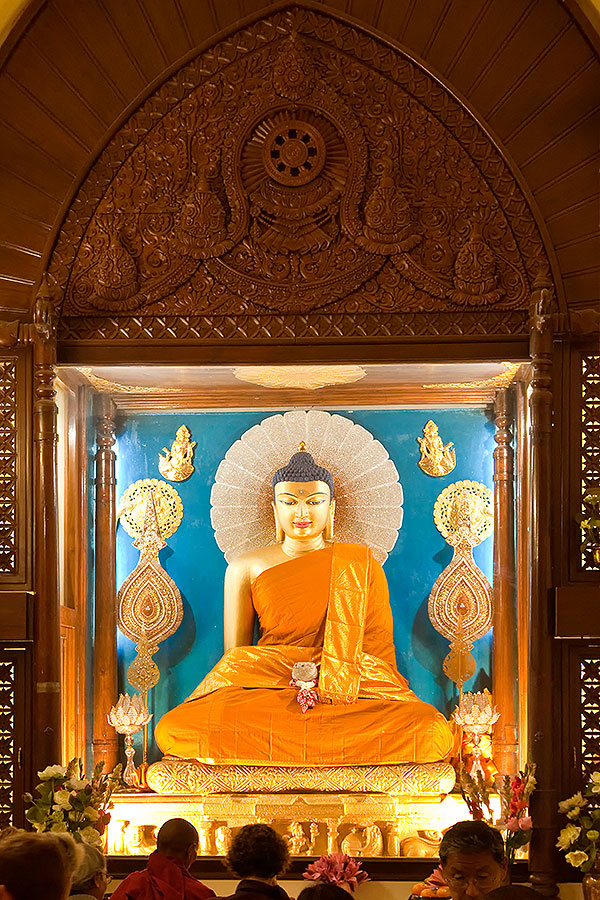
Finally, we enter the main sanctum of the Mahabodhi Temple and see the splendid gilded stone statue of the Buddha, dating from the 10th century. Then we must leave; tomorrow we will go on to Delhi.
